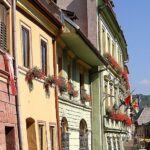Brasov

Nestled in the Carpathian Mountains, Brasov (Brașov) is a picturesque city that feels like it’s straight out of a fairytale. Its Gothic architecture, charming cafes, and vibrant atmosphere make it a favourite among locals and visitors alike. Whether you visit in the summer or winter, Brasov offers something for everyone.
In the past, the city served as the focal point of the Burzenland (Țara Bârsei in Romanian), a region previously controlled by the Transylvanian Saxons (Siebenbürger Sachsen in German). It held considerable importance as a major trading centre along the routes connecting Austria (initially part of the Archduchy of Austria within the Habsburg monarchy and later the Austrian Empire) and Turkey (then under the Ottoman Empire). Additionally, it holds historical significance as the place where the national anthem of Romania was initially performed.










